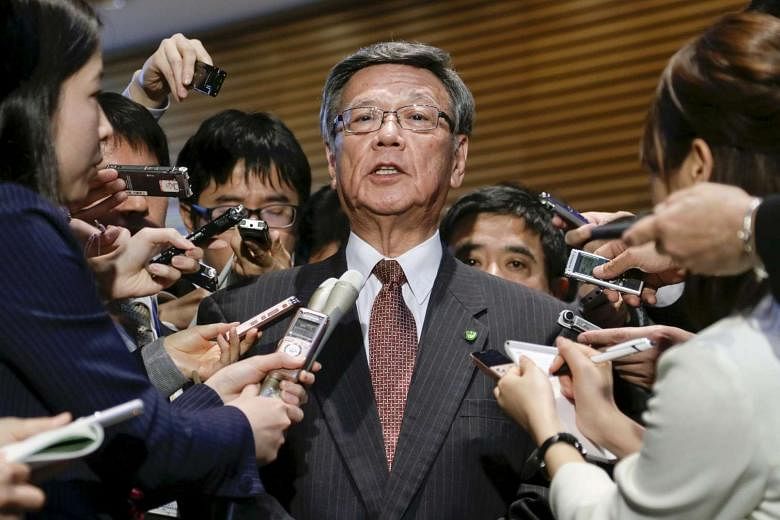In its editorial on Apr 1, the paper calls for a resolution of the land issue pointing out that it will revitalise local communities
Shouldn't the current deadlock in which a large-scale return of United States military facilities to Japan is being hindered by illegal obstruction be quickly overcome?
The government is intensifying its moves toward realising the return of part of the US forces' Northern Training Area in Okinawa.
Since last week, Chief Cabinet Secretary Yoshihide Suga and Defence Minister Gen Nakatani have successively asked Okinawa Governor Takeshi Onaga to cooperate over the issue.
The training area is the largest US military facility in Okinawa Prefecture.
With the Special Action Committee on Okinawa (SACO) agreement reached between Japan and the United States in 1996, a decision was made to return about 4,000 hectares of the estimated total of 7,500ha of the training facility.
The return was agreed on the condition that six helicopter landing zones be relocated within the remaining land of the facility.
The area to be returned accounts for nearly 20 per cent of the total area of US military facilities located in the prefecture. Return of the land would have great significance.
The government began constructing helicopter landing zones in 2007, following an environmental impact assessment, but only two have been completed.
Progress has been slow primarily because groups of local residents and others opposed to the construction have been blocking the gateway to the training area with such tactics as leaving vehicles on a prefectural road, preventing construction vehicles from accessing the site.
Mr Onaga, the administrator of the prefectural road, has responded in questionable fashion.
Faced with calls to cooperate in removing illegally parked vehicles, including a request from Mr Suga, Mr Onaga has consistently maintained a cautious stance, saying only, "I have given instructions orally."
Mr Onaga normally has strong authority as administrator of the road. Should he earnestly strive to have vehicles removed from the prefectural road, the situation would likely improve markedly.
Osprey transport aircraft of the US forces have been deployed at the northern training area.
Although Mr Onaga had pledged during a gubernatorial election campaign to nullify the deployment of Ospreys within the prefecture, he should put his first priority on the return of the training area.
Doesn't his current stance contradict his cherished view of criticising the US military facilities for having been excessively concentrated in Okinawa and his calls for the reduction of the burden on Okinawa of hosting such facilities?
Some believe Mr Onaga is taking into account the fact that both the Japanese Communist Party and the Social Democratic Party, among others, which support Mr Onaga's prefectural administration, back the groups opposing the construction of the landing zones.
Serious consideration must be given to the fact that both the villages of Kunigami and Higashi, which the training area straddles, support the SACO agreement and call for the early return of the land.
The majority of residents in neighbouring communities also approve the construction of the landing zones, provided that such measures as noise control are taken.
The forest land, excluding the training facility, is expected to be designated by the central government as "Yambaru National Park" (a tentative name) within this year.
The return of the northern Okinawa land, a treasure house of abundant nature and life, will also contribute to vitalising local economies, including tourism.
Following his talks with Gen Nakatani last week, Mr Seikyu Iju, village mayor of Higashi, emphasised: "The complete return of land, as a matter of fact, is difficult. Linking partial return of land to yet another return would better advance the consolidation and reduction of US military bases."
Should Mr Onaga attach importance to the "public opinion of local communities" over the issue of US military bases, he also needs to seriously consider these realistic judgments made by local communities.
--------------

